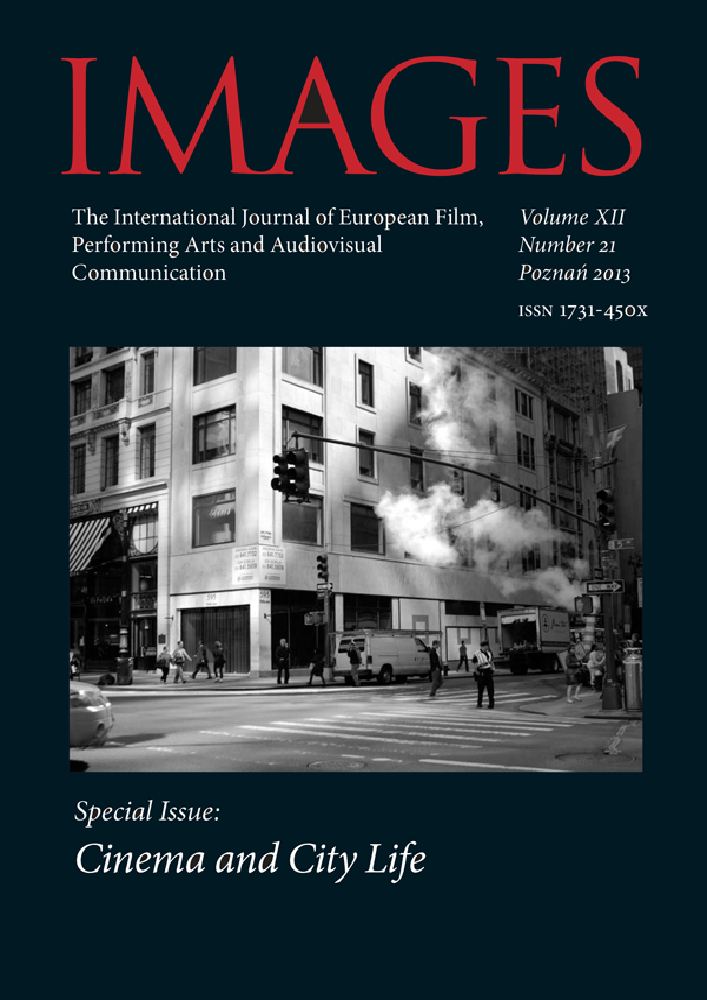Abstrakt
Between high culture and popular culture. The music of George Gershwin in Manhattan by Woody Allen
The article focuses on the relationships between high culture and popular culture in relation to film music. To this end, the author conducted a thorough analysis of the works of George Gershwin used in Woody Allen’s film Manhattan. The article consists of two parts and a conclusion. In the first part, the author presents a brief history of the continuous grinding together of high and popular culture in music, resulting in symphonic jazz, which came about in the 1920s, and whose precursor was George Gershwin. The second part is a cinematic and musicological analysis of all the works of Gershwin appearing on the soundtrack of Manhattan, and an attempt to find associations between the director and composer. In conclusion, the author notes that the phenomenon of mixing of popular culture and mass culture (both on the music, as well as its use in the work of the film) is subordinated in both George Gershwin and Woody Allen’s work to attempts to find their own identity, and one of the sources of inspiration of both artists is the same New York City, which is a city-myth.
Bibliografia
M. Hendrykowski, Komeda, Wydawnictwo Miejskie, Poznań 2009, s. 94–95.
J. Charyn, Narodziny Broadwayu, przeł. I. Chlewińska, Wydawnictwo Dolnośląskie, Wrocław 2006, s. 153.
A.G. Piotrowska, Idea muzyki narodowej w ujęciu kompozytorów amerykańskich pierwszej połowy XX wieku, Wydawnictwo Adam Marszałek, Toruń 2003, s. 149.
D. Macdonald, Teoria kultury masowej, w: Antropologia kultury: zagadnienia i wybór tekstów, oprac. G. Godlewski et al., wstęp i red. A. Mencwel, Wydawnictwa UW, Warszawa 2001, s. 482.
T. Misiak, Muzyka poważna, muzyka popularna. Dualizm kultury muzycznej a perspektywy współczesnej socjologii muzyki, „Muzyka” 1983, nr 4, s. 90.
P. Aixalà, Woody Allen. Biografia. Filmografia, przeł. K. Okrasko, Muza, Warszawa 2006, s. 62–63.
E. Lax, Rozmowy z Woody Allenem, przeł. J. Rybski, Axis Mundi, Warszawa 2008, s. 401–402.
G. McCann, Woody Allen, przeł. A. Kołodyński, „bis”, Warszawa 1993, s. 26.
C. Dahlhaus, H.H. Eggebrecht, Co to jest muzyka?, przeł. D. Lachowska, wstęp M. Bristiger, PIW, Warszawa 1992, s. 56.
W. Allen, Woody według Allena, przeł. A. Piotrowska, „Znak”, Kraków 1998, s. 134.
E. Lax, Woody Allen. Biografia, przeł. E. i D. Wojtczakowie, Zysk i S-ka, Poznań 1998, s. 411.
Licencja
Copyright
© 2013 Uniwersytet im. Adama Mickiewicza w Poznaniu
OPEN ACCESS
